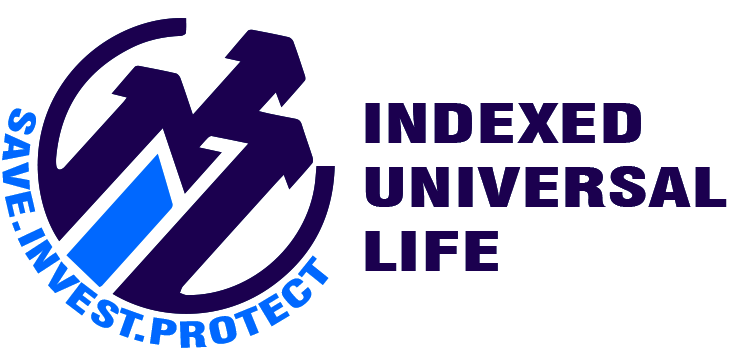Indexed Universal Life Insurance (IUL): How It Works
Updated Feb 9, 2024 · 4 min read
Written by Georgia Rose
Fact Checked
Many, or all, of the products featured on this page are from our advertising partners who compensate us when you take certain actions on our website or click to take an action on their website. However, this does not influence our evaluations. Our opinions are our own. Here is a list of our partners and here’s how we make money.
Table of Contents
- What is indexed universal life insurance (IUL)?
- How indexed universal life insurance works
- Indexed universal life vs. whole life insurance
- Pros of indexed universal life
- Cons of indexed universal life
Show More
MORE LIKE THISLife insurance providersLife insurance policy typesManaging life insuranceBuying life insuranceInsuranceLife Insurance
If you’re looking for coverage that offers the flexibility of universal life insurance and a cash value account with higher growth potential, you may want to consider indexed universal life insurance. Indexed universal life, or IUL, gives you the opportunity to tie the cash value to the performance of a stock or bond index without directly investing in the market.
IUL policies are highly complex and come with more ups and downs than many other types of life insurance. For a savvy investor looking for a policy with flexibility, IUL could be a good fit. But if you’re simply looking for permanent coverage with guarantees, a whole life policy is a better option.
» MORE: Best life insurance companies
Get multiple life insurance quotes in minutes.
Planning for your future? Get real quotes and connect with experienced agents for personalized guidance.
Find the right policy tailored to your needs and secure your peace of mind.
What is indexed universal life insurance (IUL)?
Indexed universal life insurance is a type of permanent coverage, which means it can last your entire life and build cash value. Unlike other types of universal life, an IUL policy places the cash value in sub-accounts that mirror a stock index, such as the S&P 500. As an alternative to indexed accounts, IUL policies also offer fixed account options that earn interest at a set rate.
Similar to other universal life policies, IUL gives policyholders the flexibility to adjust their premiums and life insurance death benefit as needed.
?Nerdy Tip
Indexed universal life is complex with shifting components. Anyone considering an IUL policy should find a life insurance agent with a Chartered Life Underwriter (CLU) designation to help navigate the buying and management processes. Agents with this designation have a thorough understanding of the industry and underwriting procedures.
How indexed universal life insurance works
Indexed universal life insurance works similarly to universal life. You pay a premium in exchange for lifelong coverage and have the opportunity to build cash value over time. Part of your premium payment goes toward the cost of insurance — i.e., paying out the death benefit — and other fees. The rest is added to your cash value.
Adjustable premiums and death benefit
As with universal life, IUL premiums are adjustable. If you ever decide to skip a premium payment or underpay, the cost of insurance and policy expenses are deducted from your cash value. You may also be able to adjust the death benefit amount if your needs change. However, you may be asked to complete a life insurance medical exam if you apply to increase your coverage.
» MORE: How much life insurance do I need?
Cash value
The cash value in IUL policies can earn interest in two ways:
- A fixed interest rate.
- The performance of stock and bond indexes.
You can choose to put the cash value in a fixed account, indexed account or a combination of both.
Fixed accounts
Fixed accounts grow at a fixed rate set by the insurer.
Indexed accounts
These accounts are slightly more complex. The cash value is placed in one or more sub-accounts that mirror the performance of a stock or bond index, such as the S&P 500. You can choose which accounts to invest in based on what the insurer has to offer. The insurer then pays interest to policyholders based on the performance of the index. As the index goes up, the account earns interest. If the index drops, the account earns less or nothing.
The amount you can earn is subject to “floors” and “caps” to help minimize large swings in interest payments. The floor is the lowest your account rate can go and is usually guaranteed for the life of the policy but is often set at 0%. This means the account won’t suffer losses if the market crashes.
The cap is the highest interest rate the account can earn, so if the market is up more than the cap, you’ll get credited only for the cap amount. For example, if the cap is 10% and the index rises by 12%, you’ll only earn interest of 10%. Unlike the floor, your insurer can change the cap while the policy is in force.
Participation rate
Caps are not the only way an IUL policy can restrict interest. There’s also the participation rate. This rate dictates whether the cash value that you tied to a market index can fully “participate” in the gains of that index. A participation rate below 100% will further limit the interest you can earn. For example, if the index gain is 12% and the cap is 10% (as outlined in the above example), but your participation rate is 80%, you’ll only earn 8%. The insurer can adjust the participation rate during the life of the policy.
Did you know…
There are several methods insurers use to calculate gains in indexed universal life policies, such as the Daily Average method, the Monthly Point-to-Point method and the Annual Point-to-Point method. Methods vary among policies and insurers. Be sure to carefully review the information provided and then double-check your understanding with your agent about the method used.
Indexed universal life vs. whole life insurance
| Feature | Whole life | Indexed universal life |
|---|---|---|
| Policy duration | Permanent. | Permanent. |
| Cash value earnings calculation | Fixed rate. | Stock and bond indexes, as well as fixed interest rate options. |
| Flexible premiums and death benefit | No. | Yes. |
| Cash account value can decline | No. | Yes, if growth is low, fees are high and you pay minimum or no premiums. |
» MORE: Understanding permanent life insurance
Pros of indexed universal life
Control. You can increase or decrease your premium payments, depending on your need for coverage, the growth of your cash account and your financial situation. You can also increase or decrease your coverage amount. However, you may need to complete a medical exam to boost the death benefit.
Stock market-driven returns. With indexed accounts, the cash value grows when the market grows, and that growth is often accumulated tax-deferred.
» MORE: Compare smart ways to invest in your future
Cons of indexed universal life
Risk. The indexes may not rise as quickly as projected. If this happens, the return on your investment could fail to meet your expectations. That could lead to owing extra money to keep your policy from lapsing. If all you want is a guaranteed payout and some cash value, a whole life insurance policy may be a better option.
Effort. You’ll need to monitor your policy closely. During periods of low returns, you may need to pay more into your account to prevent your policy from lapsing.
Capped returns. Caps and participation rates limit you from fully participating in the success of the market. Plus, they can come down over time, further limiting your returns.
Fees. IUL coverage fees can increase over time and may eat into the payments you make or the value of your cash account.
What are IUL policy illustrations?
When you sit down to discuss IUL policy options with an agent, you’ll be shown illustrations. These are projections of the policy’s cash value growth, based on predicted interest rates, fees, payments, caps, participation rates and loans. It’s easy to see these as accurate forecasts of the future, but they are not — they’re estimates. After all, no one knows for certain how the stock and bond markets are going to perform or what adjustments the insurance company will make.
?Nerdy Tip
When considering an indexed universal life policy, make sure to ask how the interest rates, fees, caps, participation rates or premiums could affect your policy’s performance.
Companies that offer IUL insurance
All of the companies below offer indexed universal life and earned at least 4 stars out of 5 for overall performance. NerdWallet’s ratings are determined by our editorial team and are based on the company as a whole, not individual products. The scoring methodology takes into account consumer experience, complaint data from the National Association of Insurance Commissioners and financial strength ratings.
Why you can trust NerdWallet: Our writers and editors follow strict editorial guidelines to ensure the content on our site is accurate and fair so you can make financial decisions with confidence and choose the products that work best for you. Here is a list of our partners, and here’s how we make money.
Life insurance ratings methodology
NerdWallet’s life insurance ratings are based on consumer experience, complaint index scores from the National Association of Insurance Commissioners for individual life insurance, and weighted averages of financial strength ratings, which indicate a company’s ability to pay future claims. Within the consumer experience category, we consider ease of communication and website transparency, which looks at the depth of policy details available online. To calculate each insurer’s rating, we adjusted the scores to a curved 5-point scale.
These ratings are a guide, but we encourage you to shop around and compare several insurance quotes to find the best rate for you. NerdWallet does not receive compensation for any reviews. Read our editorial guidelines.
Insurer complaints methodology
NerdWallet examined complaints received by state insurance regulators and reported to the National Association of Insurance Commissioners in 2019-2021. To assess how insurers compare to one another, the NAIC calculates a complaint index each year for each subsidiary, measuring its share of total complaints relative to its size, or share of total premiums in the industry. To evaluate a Freeway’s complaint history, NerdWallet calculated a similar index for each insurer, weighted by market shares of each subsidiary, over the three-year period. NerdWallet conducts its data analysis and reaches conclusions independently and without the endorsement of the NAIC. Ratios are determined separately for auto, home (including renters and condo) and life insurance.
Frequently asked questions
What is indexed whole life insurance?
What are the differences between whole life and indexed universal life insurance?
How can I buy indexed universal life insurance?
Follow
Georgia Rose is a lead writer on the international team at NerdWallet. Her work has been featured in The New York Times, The Washington Post, The Independent and ABC News. See full bio.



